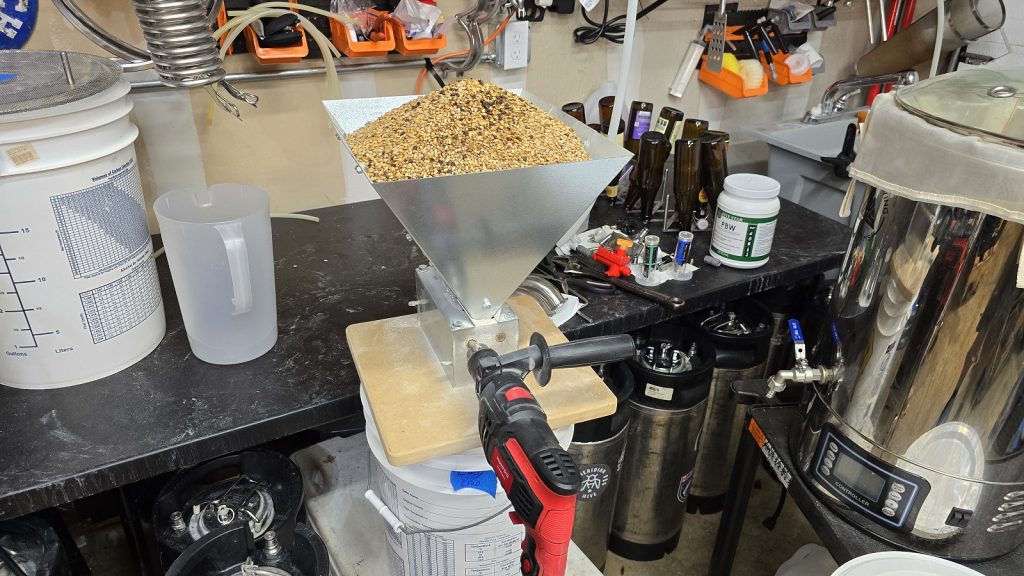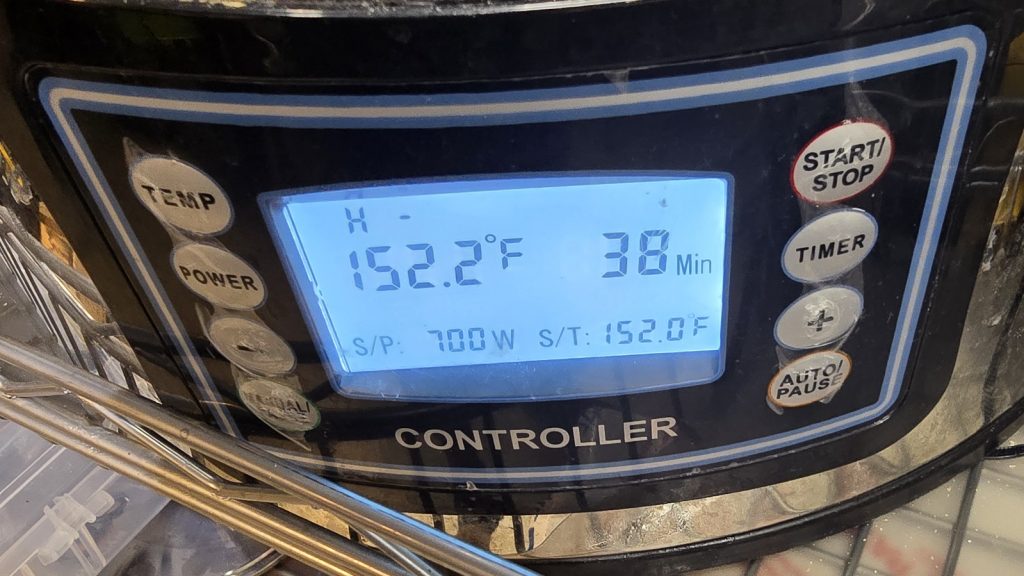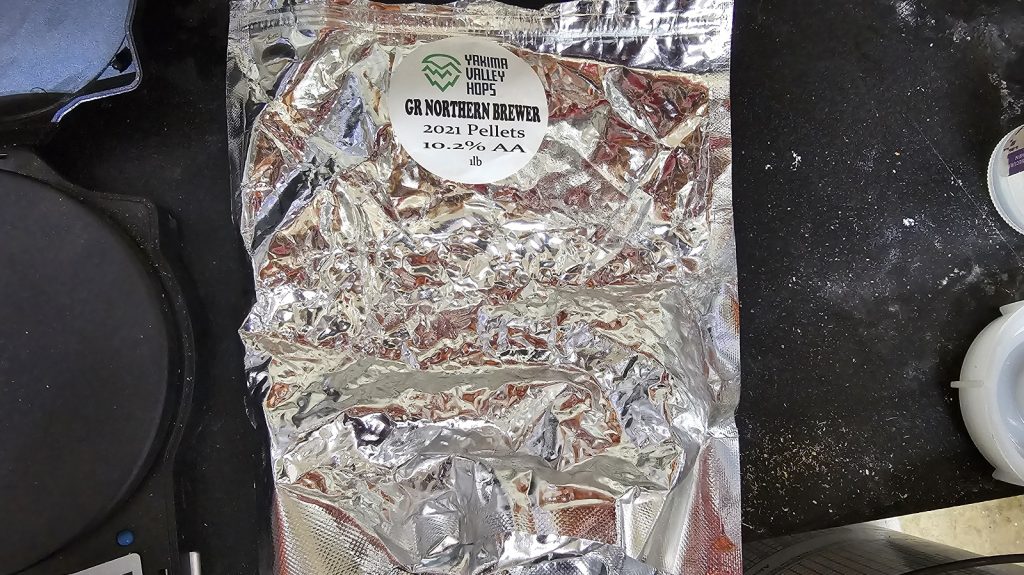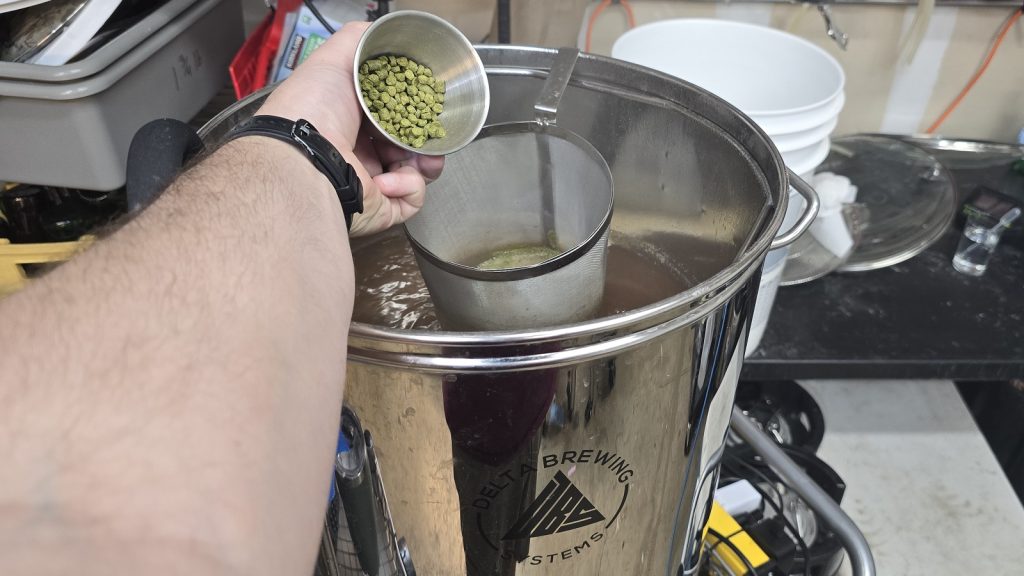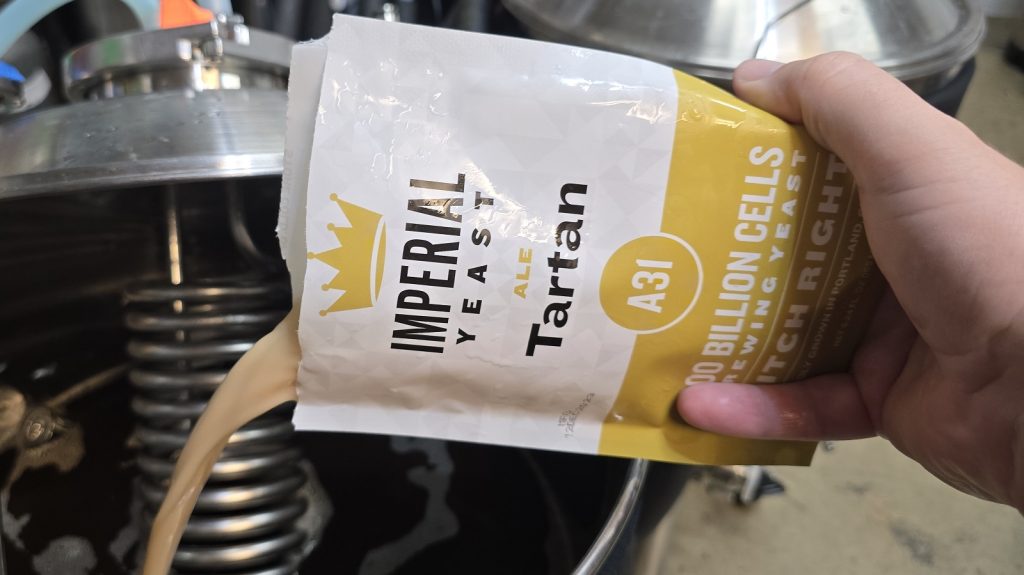Author: Will Lovell
While an exceedingly unpopular option for brewers of modern hoppy styles, caramel malt, also known as crystal malt, is an essential ingredient in many styles, contributing a varying range of colors and flavors based on the degree to which it is roasted. Caramel malts typically have a number associated with them that refers to the impact it will have on beer color, which is measured in degrees Lovibond (°L).
Commonly used to impart beer with a reddish hue along with notes of sweet caramel and toast, Caramel 60 falls in the middle of the roast spectrum and is viewed by many as a rather versatile caramel malt. Roasted slightly less, Caramel 40 imparts more of a gold color and sweet toffee notes, whereas the darker Caramel 80 is known for adding a richer red hue with dark caramel and subtle raisin flavors.
I am not a hater of caramel malt, as I enjoy styles where it’s a key ingredient, and while I like to keep a variety on-hand, I’ve occasionally found myself reaching for one type of caramel malt only to discover I don’t have the amount called for in my recipe. In these cases, I’ve been wont to blend other caramel malts such that the proper amount has the same color impact on the beer, all the while presuming the flavor contribution would be similar as well. Curious to see for myself, I decided to put it to the test in a recipe that includes a decent portion of caramel malt.
| PURPOSE |
To evaluate the differences between a Scottish Export made with Caramel 60 malt and one made with the same amount of a blend of Caramel 40 and Caramel 80 malts to achieve the same color.
| METHODS |
For this xBmt, I designed a Scottish Export recipe that includes a decent portion of caramel malt.
Keep The Heid
Recipe Details
| Batch Size | Boil Time | IBU | SRM | Est. OG | Est. FG | ABV |
|---|---|---|---|---|---|---|
| 5.5 gal | 60 min | 21.9 | 14.1 SRM | 1.052 | 1.015 | 4.86 % |
| Actuals | 1.052 | 1.015 | 4.86 % | |||
Fermentables
| Name | Amount | % |
|---|---|---|
| Maris Otter | 8.5 lbs | 83.95 |
| Caramel 60 OR 12 oz each Caramel 40 & 80 | 1.5 lbs | 14.81 |
| Roasted Barley | 2 oz | 1.23 |
Hops
| Name | Amount | Time | Use | Form | Alpha % |
|---|---|---|---|---|---|
| Northern Brewer | 18 g | 60 min | Boil | Pellet | 10.2 |
Yeast
| Name | Lab | Attenuation | Temperature |
|---|---|---|---|
| Tartan (A31) | Imperial Yeast | 75% | 69.8°F - 64.4°F |
Notes
| Water Profile: Ca 105 | Mg 0 | Na 8 | SO4 153 | Cl 77 |
Download
| Download this recipe's BeerXML file |
After collecting identical volumes of water in separate Delta Brewing Systems AIO units, adjusting each to the same desired profile, and setting the controllers to heat them up, I weighed out and milled the grains.
Once the water for each batch was adequately heated, I incorporated the grains then set both controllers to maintain my desired 152°F/67°C mash temperature.
While the mashes were resting, I prepared the kettle hop additions.
Once each 60 minute mash was complete, I removed the grains then boiled the worts, adding the single charge of hops as listed in the recipe.
At the completion of each boil, I quickly chilled the worts before taking refractometer readings indicating they were at a similar OG.
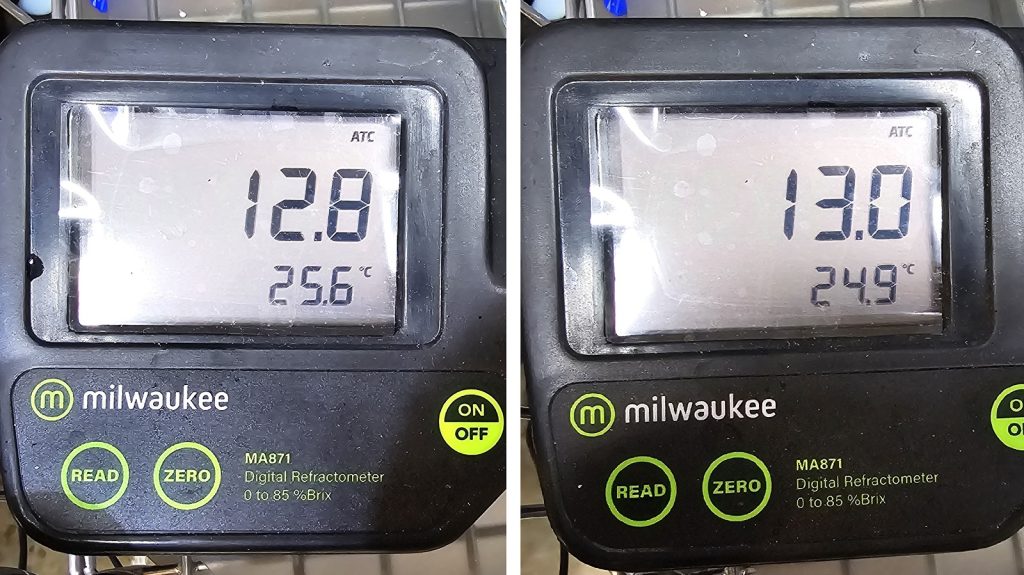
Identical volumes of wort from each batch were transferred to separate fermenters, at which point I pitched a single pouch of Imperial Yeast A31 Tartan into each.
The beers were left to ferment at 68°F/20°C for 2 weeks when, given an absence of observable activity, I took hydrometer measurements showing both were at the same FG.
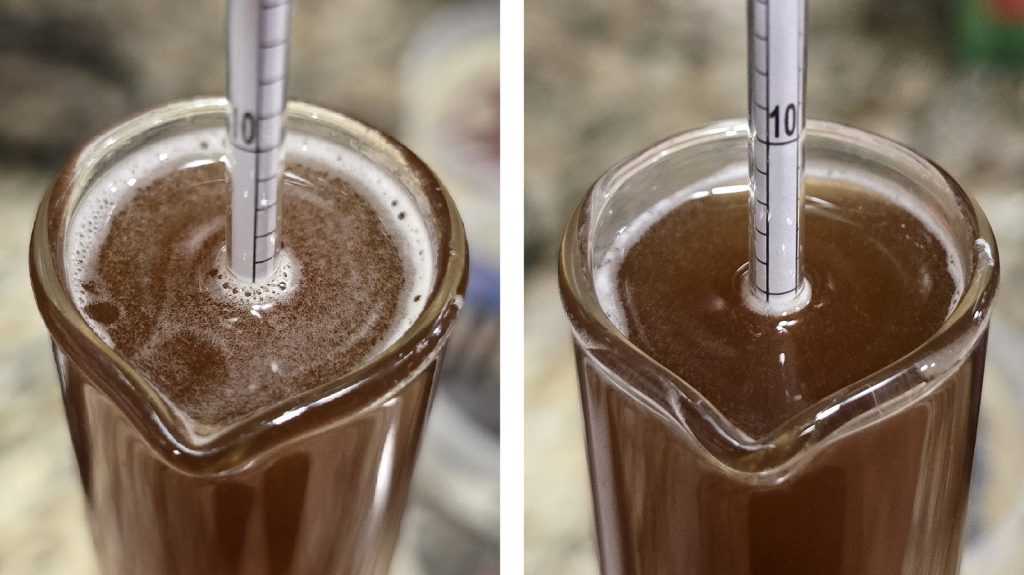
At this point, I cold-crashed the beers overnight then transferred them sanitized kegs that were placed in my keezer and left on gas for 2 weeks before they were ready for evaluation.
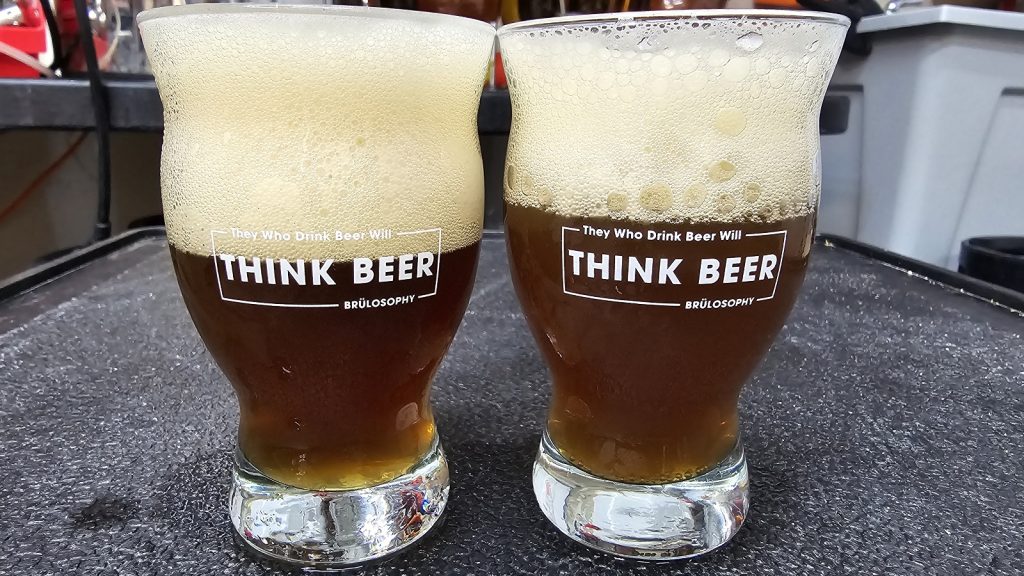
| RESULTS |
A total of 20 people of varying levels of experience participated in this xBmt. Each participant was served 2 samples of the beer made with Caramel 60 and 1 sample of the beer made with a blend of Caramel 40 and Caramel 80 in different colored opaque cups then asked to identify the unique sample. While 11 tasters (p<0.05) would have had to accurately identify the unique sample in order to reach statistical significance, 15 did (p=0.0002), indicating participants in this xBmt were able to reliably distinguish a Scottish Export made with Caramel 60 malt from one made with a blend of Caramel 40 and Caramel 80 malts to achieve the same color.
The 15 participants who made the accurate selection on the triangle test were instructed to complete a brief preference survey comparing only the beers that were different. A total of 7 tasters reported preferring the beer made with Caramel 60, 4 said they liked the beer made with the blended caramel malts more, 2 had no preference despite noticing a difference, and another 2 reported perceiving no difference.
My Impressions: Out of the 6 semi-blind triangle tests I attempted, I correctly identified the odd-beer-out just 3 times, an indication of just how similar I perceived these beers to be. To my palate, both beers had similarly pleasant toasty, caramel, and toffee notes that I expect in a good Scottish Export.
| DISCUSSION |
Despite the seemingly bad rap it’s gotten over the last decade, caramel malt is an important brewing ingredient that’s an essential component of many styles, lending both color and flavor that are distinct from other malts. Coming in a range of roast levels, some believe the characteristics of a specific caramel malt can be mimicked by blending various other caramel malts. Interestingly, tasters in this xBmt were indeed able to reliably distinguish a Scottish Export made with Caramel 60 malt from one made with a blend of Caramel 40 and Caramel 80 malts to achieve the same color.
Perhaps the most plausible explanation for this result is that, while the blend of Caramel 40 and Caramel 80 did achieve the same color in the finished beer, each contributed its own unique flavor characteristics that were distinct from the beer made with Caramel 60. Viewed in light of a past xBmt where tasters could tell apart an English Bitter made with Caramel 60 from one made with a blend of Caramel 20 and Caramel 100, it seems blending may not produce an exact analogue of a single caramel malt, despite being a relatively close approximation.
I’m not a heavy user of Caramel malts, so I tend to keep smaller amounts of a few varieties on-hand, and I’ve certainly encountered scenarios where I don’t have the amount needed for a recipe. While I was aware of the aforementioned prior xBmt on this topic, I somewhat expected these beers to be less distinguishable given how close the blended malts were in color to the Caramel 60, and based on my own inability to tell them apart, this seemed to be the case. The fact blind tasters were capable of reliably distinguishing these beers not only suggested that different caramel malts impart their own unique flavors, but reminded me how idiosyncratic perception can be.
If you have any thoughts about this xBmt, please do not hesitate to share in the comments section below!
Support Brülosophy In Style!
All designs are available in various colors and sizes on Amazon!
Follow Brülosophy on:
FACEBOOK | TWITTER | INSTAGRAM
If you enjoy this stuff and feel compelled to support Brulosophy.com, please check out the Support page for details on how you can very easily do so. Thanks!


